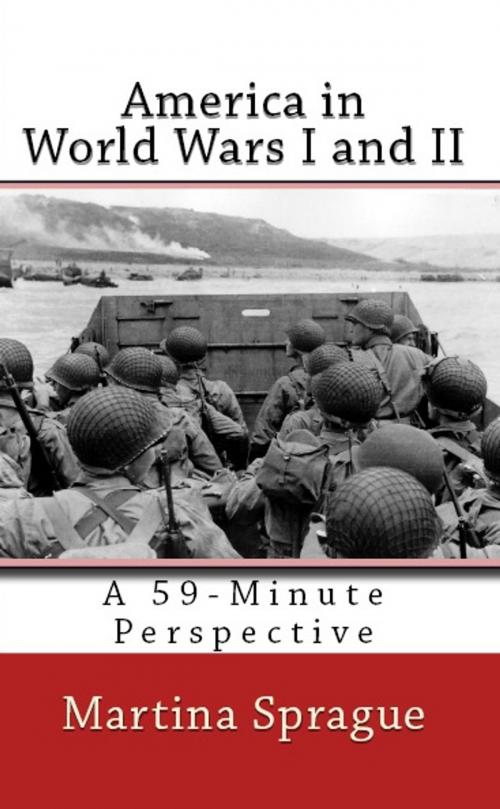America in World Wars I and II
Nonfiction, History, Military, World War I, United States, World War II| Author: | Martina Sprague | ISBN: | 1230000128385 |
| Publisher: | Martina Sprague | Publication: | April 28, 2013 |
| Imprint: | Language: | English |
| Author: | Martina Sprague |
| ISBN: | 1230000128385 |
| Publisher: | Martina Sprague |
| Publication: | April 28, 2013 |
| Imprint: | |
| Language: | English |
Never having participated in a conflict on the scale of World War I naturally taught America that it needed some adjustments to its military forces. When America entered the war, the Allies also minimized American achievements and viewed American troops as less prepared to meet the challenges of modern wars than the stalwart, disciplined, and well-trained French and British forces. In the interwar period, the United States realized that Japan was becoming a growing strategic problem. In case of war, the American war effort would have to be divided between Europe and Asia. What America might be best remembered for, however, are the strategic bombing campaigns which culminated in dropping the atomic bombs on Hiroshima and Nagasaki. After World War II, America focused on a strategy of deterrence and containment of communism, with a commitment to defeat totalitarian regimes, which it believed was essential for the economic growth of the Free World.
There are many prisms through which one can view American participation in World Wars I and II. Rather than providing definite answers, this brief study aims at rousing additional interest and provoking critical thinking about how these large-scale wars shaped military policy and the future of the United States Armed Forces, including our nation’s decision to go to war. Discussions include the following topics:
1. America Enters World War I
2. American Strategy and Tactics in the Great War
3. Military Preparations in the Interwar Years
4. Doctrinal Differences between the Military Branches
5. America Enters World War II
6. The Strategic Bombings of Japan and Germany
7. Allied Victory and the End of World War II
8. How America’s Warfare Policies Changed after World War II
9. Topics for Further Study and Debate
The book is suitable for history interested readers looking for thought provoking topics, but not having a lot of time; and for teachers preparing the class for critical thinking about historical events, and how they have come to affect current affairs. More books with focus on domestic and international military history will be forthcoming in this new series titled, A 59-Minute Perspective.
Never having participated in a conflict on the scale of World War I naturally taught America that it needed some adjustments to its military forces. When America entered the war, the Allies also minimized American achievements and viewed American troops as less prepared to meet the challenges of modern wars than the stalwart, disciplined, and well-trained French and British forces. In the interwar period, the United States realized that Japan was becoming a growing strategic problem. In case of war, the American war effort would have to be divided between Europe and Asia. What America might be best remembered for, however, are the strategic bombing campaigns which culminated in dropping the atomic bombs on Hiroshima and Nagasaki. After World War II, America focused on a strategy of deterrence and containment of communism, with a commitment to defeat totalitarian regimes, which it believed was essential for the economic growth of the Free World.
There are many prisms through which one can view American participation in World Wars I and II. Rather than providing definite answers, this brief study aims at rousing additional interest and provoking critical thinking about how these large-scale wars shaped military policy and the future of the United States Armed Forces, including our nation’s decision to go to war. Discussions include the following topics:
1. America Enters World War I
2. American Strategy and Tactics in the Great War
3. Military Preparations in the Interwar Years
4. Doctrinal Differences between the Military Branches
5. America Enters World War II
6. The Strategic Bombings of Japan and Germany
7. Allied Victory and the End of World War II
8. How America’s Warfare Policies Changed after World War II
9. Topics for Further Study and Debate
The book is suitable for history interested readers looking for thought provoking topics, but not having a lot of time; and for teachers preparing the class for critical thinking about historical events, and how they have come to affect current affairs. More books with focus on domestic and international military history will be forthcoming in this new series titled, A 59-Minute Perspective.















